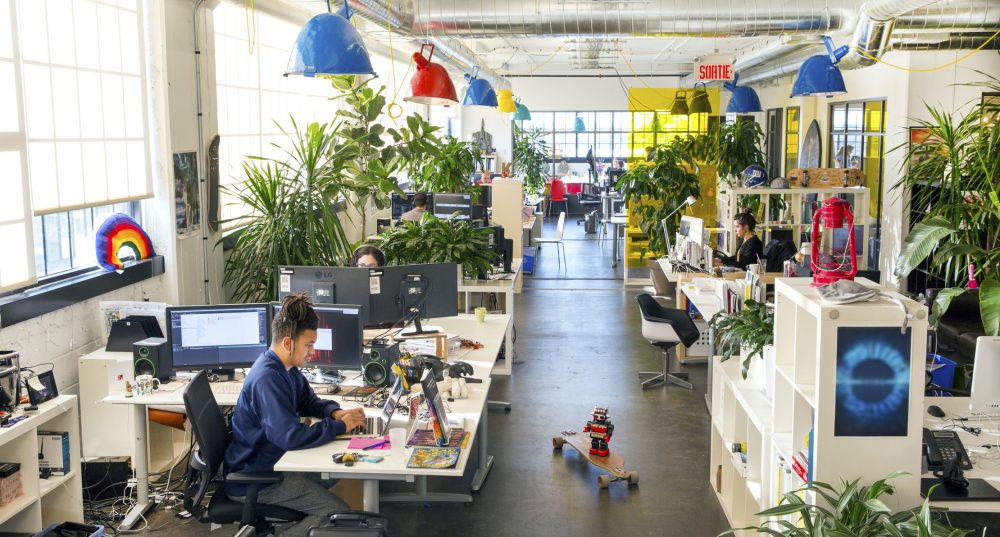WDM Founder, Bob Fox explores how the office must enable, inspire, and empower the people using it in order to move forward + some ideas of what the future of work could look like.

Recent events have clearly demonstrated that in order for the office to remain viable, we need to start thinking about it differently. The number of people not returning to the office underscores its potential shortcomings and that we need to bring the workplace into alignment with the rest of our tools and technology.
Research reinforces that there’s an important need, for face-to-face communication, social interaction, and collaborative work, all of which offer the subtle forms of communication that occurs when people share the same space, and is still very difficult to achieve virtually. We need face-to-face, in-person interaction and the physical space to host it. We are social beings and in order to thrive, we depend on a high-level of rich interaction. Traditionally the office served that function; our tools were fixed and we needed a common support space for our work to occur.
Think of the office building as the hardware. Now it needs to be updated.
The way we work has changed but the office has not fully adapted. The way that we approach the office is out of date. We tend to look at our office environment as something unique and independent. We build a box completely independent of the work that is to be done, then we furnish it with generic parts of what we need. Think of the office building as the hardware. Now it needs to be updated.
Commercial real estate and its associated disciplines became highly efficient at serving the need for office space as an efficient cost-effective common shared place to work, to house people, and the amenities that provide service and utility or create a unique experience. All of these are still valuable and attract us as humans. But when it comes to the way that we work and the work that we do, we require more technologically advanced environments.
When we look at the work we do, we start to see something very different. Today, we have more choices in how we do our work than ever before. Our technology has created tools that are highly effective and enable us to communicate and perform our work with tremendous speed and precision. We are resisting going to a work environment that does not enhance these capabilities as it is costly and inefficient.
We can’t ignore the advanced systems and tools that are often combined to help us do our work from anywhere. We have become very comfortable with technology like Zoom, Slack, and many other apps that help us share information and collaborate. But at the end of the day, we still need in-person meetings for the most creative and deepest levels of communication.
The building may be the hardware, but we need to think carefully about the user experience…
In order to get work done, the office needs to embrace modern tools in a seamless manner that immerses the user and teams, becoming a fully integrated experience. The reality is that our workspace includes physical, virtual, digital, augmented, mixed reality, and more. These platforms enable us to perform more efficiently and offer tremendous flexibility. The building may be the hardware, but we need to think carefully about the user experience, otherwise the office remains a box that diminishes in value.
We need to be asking questions about how we are doing our work, the team, the support required, and the tools that we are using. There are no standards. Each organization is unique and must develop their own space and necessary tools. It requires a solution embraced by the collective organization, supported by leadership, and thoroughly communicated throughout the organization. Until we do this, people will continue to choose an environment that best suits them as an individual, and perhaps not the organization.
The office can not remain stagnant or regurgitate obsolete design while better technology and tools are rapidly emerging.
Each organization needs to take a deeper look at how they are working, the tools that they are using, how they communicate and interact, and the space to support their work. We need to understand better how to integrate the tools and communication to meet the needs of the specific organization and its goals. We need to fully engage the disciplines that are necessary to create a better workspace.
The office is a tool to get work done, but it has to be pertinent and aligned, in order to improve the way we work. It must provide value and benefit to the organizations and the people using it alike. The office can not remain stagnant or regurgitate obsolete design while better technology and tools are rapidly emerging.
The primary consideration needs to be how we work and how our workspace embraces, enables, inspires, and empowers the people using it.
Here are a few ideas of how our experience with physical space is being pushed into the future:
This example is a good representation of what the future of work could be.
This example integrates art and storytelling:
Finally, check out this fun digital art installation as well:


